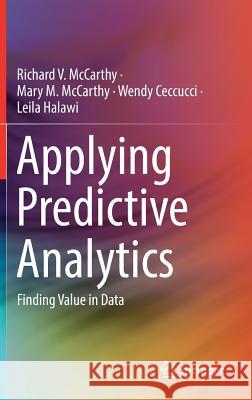Applying Predictive Analytics : Finding Value in Data » książka
topmenu
Applying Predictive Analytics : Finding Value in Data
ISBN-13: 9783030140373 / Angielski / Twarda / 2019 / 205 str.
Kategorie:
Kategorie BISAC:
Wydawca:
Springer
Język:
Angielski
ISBN-13:
9783030140373
Rok wydania:
2019
Wydanie:
2019
Ilość stron:
205
Waga:
0.48 kg
Wymiary:
23.39 x 15.6 x 1.42
Oprawa:
Twarda
Wolumenów:
01











